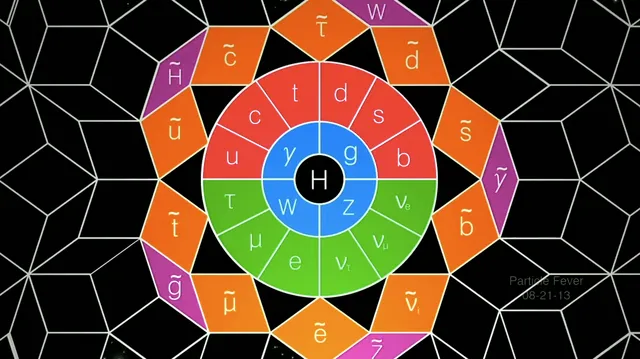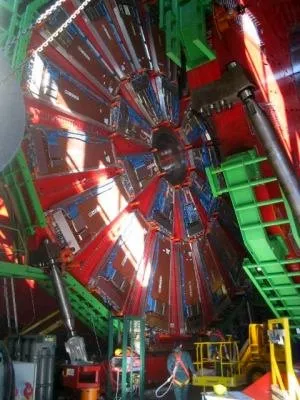I discuss today my latest research article, which appeared on the online archives roughly three weeks ago. For those interested in reading the full thing, the paper can be downloaded from here.

[image credits: CERN]
In this article, collaborators and myself discuss the sensitivity of the Large Hadron Collider, the LHC running at CERN, to new phenomena messing up with flavors.
But what all of that mean explicitly?
What flavors are we talking about?
And why is this work of mine important?
PARTICLE PHYSICS STUDIES OF NEW PHENOMENA
Let me first try to sketch one of the main purposes, in my humble opinion, of all theoretical studies investigating new phenomena at the Large Hadron Collider. We have indeed thousands of them published every year, and there is a good reason behind this.
Of course, physicists want to know which models featuring new phenomena, coined new physics models, are still viable with respect to data. Moreover, we also want to know how to probe these models better, with the experiments we have at our disposal. This is the reason number one. But that is not the end of the story.
The other reason relies on the fact that we know for sure that the Standard Model of particle physics, despite working so well, is incomplete. Therefore, we must have some new phenomena somehow, stemming from a new theoretical framework extending the Standard Model.

[image credits: Freerk (CC BY-SA 3.0)]
The exact nature of the some and somehow of the previous sentence is the one-million-dollar question, together with the precise definition of the above-mentioned new framework.
To be able to answer this question, we, as physicists, need to make sure that all the possible corners where these some and somehow may lie are covered by the experimental searches.
This was the key point of my article: we picked an exemplary toy model representing large classes of theories. It turned out that the main handle on these theories at the LHC was not covered by the current searches. We hence demonstrated that the experimental search program in particle physics had to be extended.
We indeed cannot afford any loophole here
[ I have started with the TLDR part this time... ]
SUPERSYMMETRY IN A NUTSHELL
In my work, we focused on a class of supersymmetric models. Let us thus continue this post by defining supersymmetry.
In general, we have to distinct classes of particles in the universe: fermions and bosons. Fermions and bosons differ by their spin, that consists in their intrinsic angular momentum. This property is associated with a quantum number that can be a half-integer (fermion) or an integer (fermion) number. Ignoring any single detail, the important point is that fermions and bosons consequently possess totally different properties.
In the Standard Model, the matter sector (the most elementary constituents of matter) is made of fermions, whilst the interactions are mediated by bosons. And the Higgs boson… is a boson.

[image credits: everywhere on the web…]
Supersymmetry is one of the possible symmetries realized in nature and it maps bosons and fermions. Supersymmetry hence transforms a boson into a fermion, and vice versa.
In the simplest supersymmetric extension of the Standard Model, each Standard Model particle gets a partner. This is illustrated on the image on the left.
The advantages of such a framework is that several of the conceptual issues of the Standard Model are solved. For instance, supersymmetry features the unification of three fundamental interactions, makes the Higgs stable, predicts dark matter, etc.
FLAVORFUL SUPERSYMMETRY
If we analyze the picture in the previous section, we can observe six standard quarks: the @up-quark, @down-quark, @strange-quark, @charm-quark, @bottom-quark and @top-quark. Yes, all these Steem accounts exist…
The quarks are the tiniest bits making all atomic nuclei of the universe, as well as other unstable beasts. More information can be found in this post, so that I will omit any single detail again. Life is hard I know!

[image credits: Harp (CC BY-SA 3.0)]
In supersymmetry, all quarks get actually two partners named squarks. We have thus 12 of those squarks, and none of them is on Steem yet!
Supersymmetry being very popular, many studies have investigated how to discover squarks at colliders, relying on the fact that a given squark was the partner of the corresponding quark.
Consequently, a top squark can decay into a top quark (and dark matter), and a charm squark decays into a charm quark (and dark matter).
Since supersymmetric particles must be pair-produced, one could imagine the following two processes at the LHC:
- the production of a pair of top squarks decaying into two top quarks and invisible stuff;
- the production of a pair of charmed squarks decaying into two charm quarks and invisible stuff.
Those two squark production modes have been independently investigated deeply up to now, for null results unfortunately.
Intriguingly enough, the mixed case is possible. We could produce one top and one charm squark that then decay into a charm quark, a top quark and invisible stuff.
Amusingly speaking, this top-charm signature has been ignored by both ATLAS and CMS so far.
In my work, we have shown the potential of searching for it. Relying on the simulations of LHC collisions, we have demonstrated that it can help to cover a class of new physics model that could escape detection at the LHC otherwise.
TAKE-HOME MESSAGE
In this post, I have discussed a little bit what supersymmetry is and how it is searched for at the LHC. I have then move on with one of my recent research works, in which a new way to probe certain supersymmetric models at the LHC has been introduced. The idea was to close a loop hole in the experimental search program that was so far permitting certain classes of models to escape detection when relying on classical searches only.
One important strength of this article is that even if we focused on supersymmetry, the signature of the model can be common to many models. The results therefore hold in many different frameworks.
STEEMSTEM
SteemSTEM is a community-driven project that now runs on Steem for almost 2 years. We seek to build a community of science lovers and to make Steem a better place for Science Technology Engineering and Mathematics (STEM). In particular, we are now actively working in developing a science communication platform on Steem.
More information can be found on the @steemstem blog, on our discord server and in our last projet reports here and there.